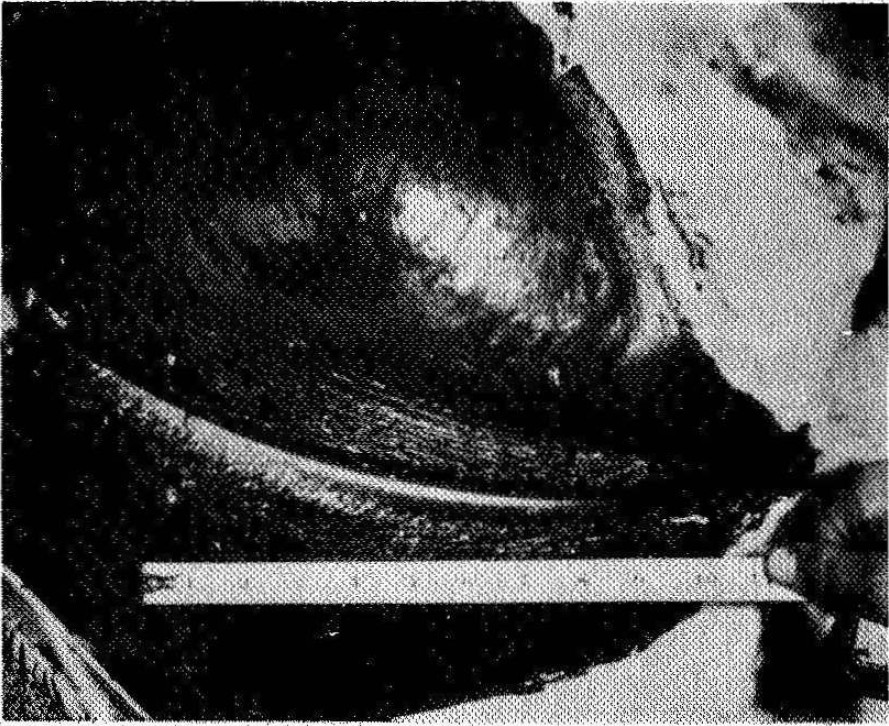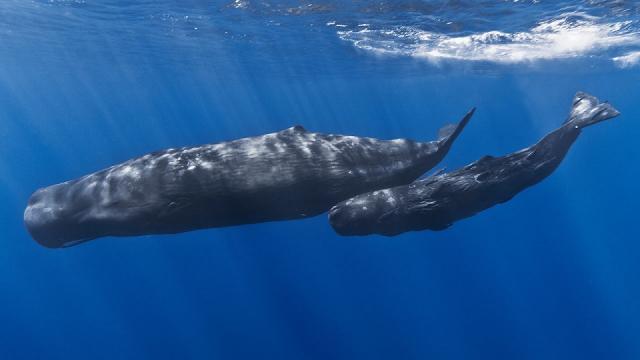The sperm whale has an internal organ that has been of much interest to scientists for decades. What’s surprising is that it’s not biologists who are interested in it. The people studying this ocean traveller are people who want to travel through space.
Just behind a sperm whale’s blow hole is a weird structure that looks a bit like two halves of a brain, or two blackened chestnuts set flat side towards each other. To early French biologists they looked like the muzzle of a monkey, which earned them the name “museau de singe”. These days, the two lobes are called “phonic lips”.
The inside of a sperm whale’s face isn’t as symmetrical as the outside. While the left nasal passage leads to the blow hole and the phonic lips, the right loop-de-loops around, and opening up now and again into big chambers. When the sperm whale blows air towards its blow hole with its left nasal passage, sometimes it pushes a little past its phonic lips. The lips open and snap shut, making clicks and creaks. These clicks and creaks take a ride through the right nasal passage, barreling through the loops and getting amplified in the chambers until they head off into the open ocean. Sailors in the hulls of boats used to know sperm whales were nearby because of the weird tapping sounds that they heard on the sides of the boat.

The sperm whale is remarkably well-equipped to do this. For example, put any gas under pressure and it will compress. Lower gas volume should make it harder to create sound, but the sperm whale keeps clicking and creaking, with undiminished frequency, even at depths where air is compressed to 2 per cent of the volume it has at the surface of the ocean.
This apparatus has, in its time, gained the interest of more than just biologists and whalers. A paper on the subject was presented at a conference sponsored by NASA in 1972, and is published among NASA technical documents. It was part of wider research done on what NASA described as Animal Orientation and Navigation.
The sperm whale uses its clicking to communicate, but it also uses them to seek out prey. It has one kind of click for when it’s just scouting around for food, and another for when it’s close to a giant squid and chasing the thing down. Essentially, it’s the sperm whale’s personal version of sonar. This won’t help anyone navigate in space, where there is nothing to carry those sound waves. But on another planet, or in another ocean, the phonic lips might work really well as a biomimetic apparatus.
It makes for a rather poetic image — a spacecraft making its way through the atmosphere of Venus or the seas of an alien moon, using the same navigation equipment as that of an Earthbound sperm whale.
